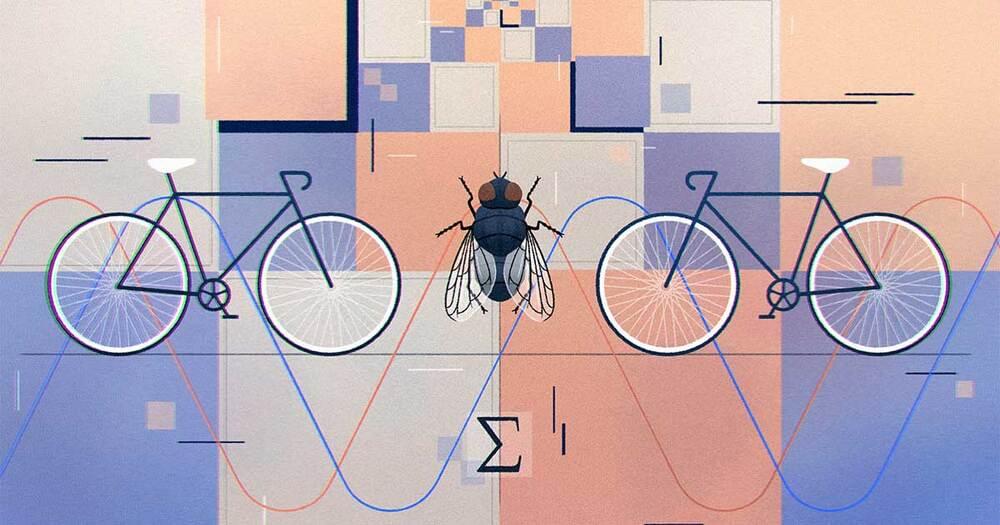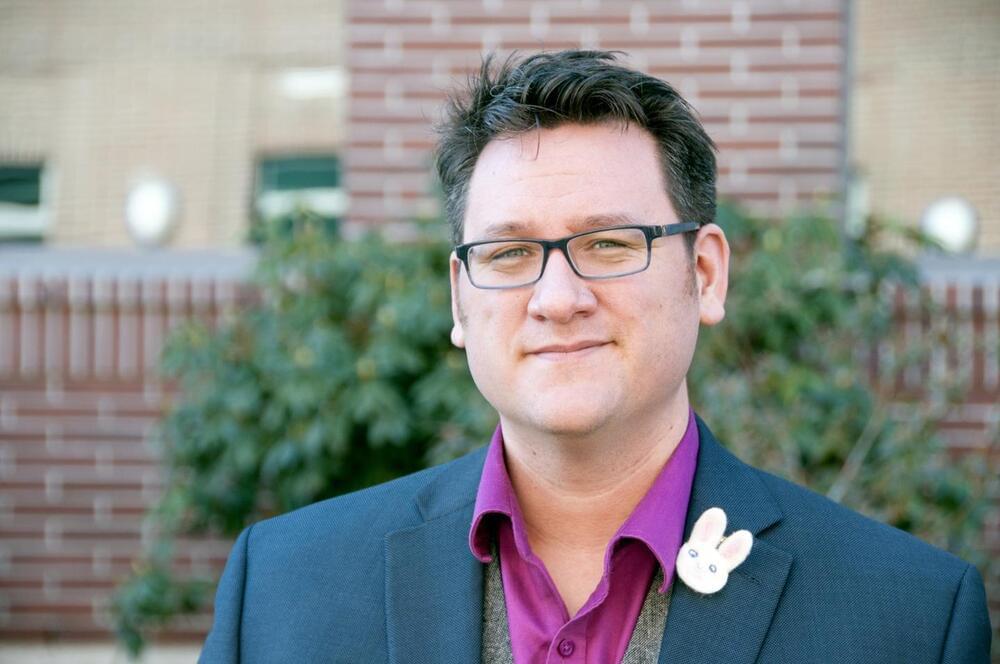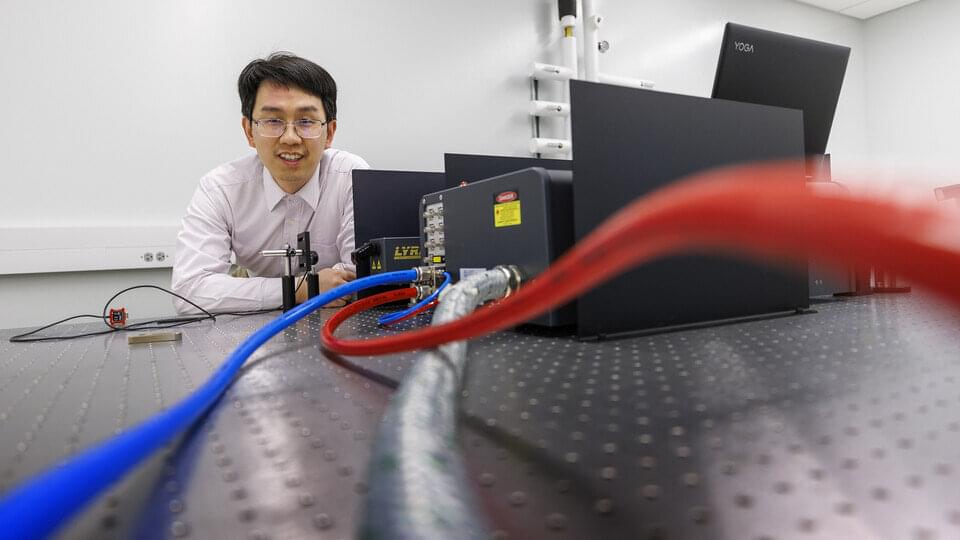😳!
Infinite sums are among the most underrated yet powerful concepts in mathematics, capable of linking concepts across math’s vast web.


A team of physicists at the University of Edinburgh’s School of Physics and Astronomy has used mathematical calculations to show that quantum communications across interstellar space should be possible. In their paper published in the journal Physical Review D, the group describes their calculations and also the possibility of extraterrestrial beings attempting to communicate with us using such signaling.
Over the past several years, scientists have been investigating the possibility of using quantum communications as a highly secure form of message transmission. Prior research has shown that it would be nearly impossible to intercept such messages without detection. In this new effort, the researchers wondered if similar types of communications might be possible across interstellar space. To find out, they used math that describes that movement of X-rays across a medium, such as those that travel between the stars. More specifically, they looked to see if their calculations could show the degree of decoherence that might occur during such a journey.
With quantum communications, engineers are faced with quantum particles that lose some or all of their unique characteristics as they interact with obstructions in their path—they have been found to be quite delicate, in fact. Such events are known as decoherence, and engineers working to build quantum networks have been devising ways to overcome the problem. Prior research has shown that the space between the stars is pretty clean. But is it clean enough for quantum communications? The math shows that it is. Space is so clean, in fact, that X-ray photons could travel hundreds of thousands of light years without becoming subject to decoherence—and that includes gravitational interference from astrophysical bodies. They noted in their work that optical and microwave bands would work equally well.

What is time? Why is it so different from space? And where did it come from? Scientists are still stumped by these questions — but working harder than ever to answer them.
St. Augustine said of time, “If no one asks me, I know what it is. If I wish to explain to him who asks, I don’t know.” Time is an elusive concept: We all experience it, and yet, the challenge of defining it has tested philosophers and scientists for millennia.
It wasn’t until Albert Einstein that we developed a more sophisticated mathematical understanding of time and space that allowed physicists to probe deeper into the connections between them. In their endeavors, physicists also discovered that seeking the origin of time forces us to confront the origins of the universe itself.
What exactly is time, and how did it come into being? Did the dimension of time exist from the moment of the Big Bang, or did time emerge as the universe evolved? Recent theories about the quantum nature of gravity provide some unique and fantastic answers to these millennia-old questions.

Do you remember the days in schooling when we attended math classes? The most common question was when we would ever use trigonometric functions or other mumbo-jumbo in real life.
How is it possible for a virtual world to create the exact replica of a person in zeroes and ones? There is not just one technology aiding in creating the fascinating world of Metaverse and IoT is one amongst them.

Summary: A new mathematical model that identifies essential connections between neurons reveals some neural networks in the brain are more essential than others.
Source: HHMI
After a career spent probing the mysteries of the universe, a Janelia Research Campus senior scientist is now exploring the mysteries of the human brain and developing new insights into the connections between brain cells.

Researchers at the University of Houston are reporting a first-of-its-kind technology that not only repairs heart muscle cells in mice but also regenerates them following a heart attack, or myocardial infarction as its medically known.
Published in The Journal of Cardiovascular Aging 0, the groundbreaking finding has the potential to become a powerful clinical strategy for treating heart disease in humans, according to Robert Schwartz, Hugh Roy and Lillie Cranz Cullen Distinguished Professor of biology and biochemistry at the UH College of Natural Sciences and Mathematics.
The new technology developed by the team of researchers uses synthetic messenger ribonucleic acid (mRNA) to deliver mutated transcription factors — proteins that control the conversion of DNA into RNA — to mouse hearts.
The talk is provided on a Free/Donation basis. If you would like to support my work then you can paypal me at this link:
https://paypal.me/wai69
Or to support me longer term Patreon me at: https://www.patreon.com/waihtsang.
Unfortunately my internet link went down in the second Q&A session at the end and the recording cut off. Shame, loads of great information came out about FPGA/ASIC implementations, AI for the VR/AR, C/C++ and a whole load of other riveting and most interesting techie stuff. But thankfully the main part of the talk was recorded.
TALK OVERVIEW
This talk is about the realization of the ideas behind the Fractal Brain theory and the unifying theory of life and intelligence discussed in the last Zoom talk, in the form of useful technology. The Startup at the End of Time will be the vehicle for the development and commercialization of a new generation of artificial intelligence (AI) and machine learning (ML) algorithms.
We will show in detail how the theoretical fractal brain/genome ideas lead to a whole new way of doing AI and ML that overcomes most of the central limitations of and problems associated with existing approaches. A compelling feature of this approach is that it is based on how neurons and brains actually work, unlike existing artificial neural networks, which though making sensational headlines are impeded by severe limitations and which are based on an out of date understanding of neurons form about 70 years ago. We hope to convince you that this new approach, really is the path to true AI.
In the last Zoom talk, we discussed a great unifying of scientific ideas relating to life & brain/mind science through the application of the mathematical idea of symmetry. In turn the same symmetry approach leads to a unifying of a mass of ideas relating to computer and information science. There’s been talk in recent years of a ‘master algorithm’ of machine learning and AI. We’ll explain that it goes far deeper than that and show how there exists a way of unifying into a single algorithm, the most important fundamental algorithms in use in the world today, which relate to data compression, databases, search engines and also existing AI/ML. Furthermore and importantly this algorithm is completely fractal or scale invariant. The same algorithm which is able to perform all these functionalities is able to run on a micro-controller unit (MCU), mobile phone, laptop and workstation, going right up to a supercomputer.
The application and utility of this new technology is endless. We will discuss the road map by which the sort of theoretical ideas I’ve been discussing in the Zoom, academic and public talks over the past few years, and which I’ve written about in the Fractal Brain Theory book, will become practical technology. And how the Java/C/C++ code running my workstation and mobile phones will become products and services.

After some serious number crunching, a UBC researcher has come up with a mathematical model for a viable time machine.
Ben Tippett, a mathematics and physics instructor at UBC’s Okanagan campus, recently published a study about the feasibility of time travel. Tippett, whose field of expertise is Einstein’s theory of general relativity, studies black holes and science fiction when he’s not teaching. Using math and physics, he has created a formula that describes a method for time travel.
“People think of time travel as something as fiction,” says Tippett. “And we tend to think it’s not possible because we don’t actually do it. But, mathematically, it is possible.”

Researchers from the University of Nebraska-Lincoln and the University of California, Berkeley, have developed a new photonic device that could get scientists closer to the “holy grail” of finding the global minimum of mathematical formulations at room temperature. Finding that illusive mathematical value would be a major advancement in opening new options for simulations involving quantum materials.
Many scientific questions depend heavily on being able to find that mathematical value, said Wei Bao, Nebraska assistant professor of electrical and computer engineering. The search can be challenging even for modern computers, especially when the dimensions of the parameters—commonly used in quantum physics—are extremely large.
Until now, researchers could only do this with polariton optimization devices at extremely low temperatures, close to about minus 270 degrees Celsius. Bao said the Nebraska-UC Berkeley team “has found a way to combine the advantages of light and matter at room temperature suitable for this great optimization challenge.”
